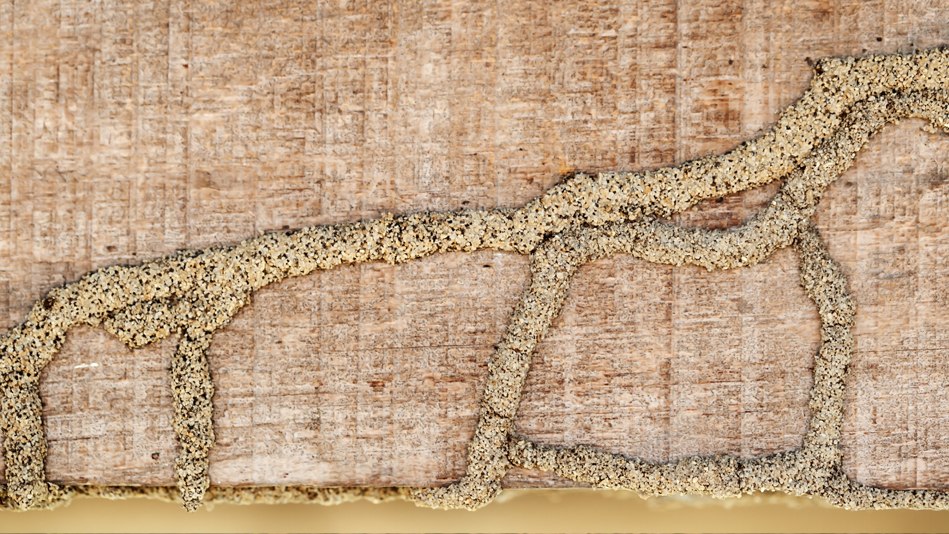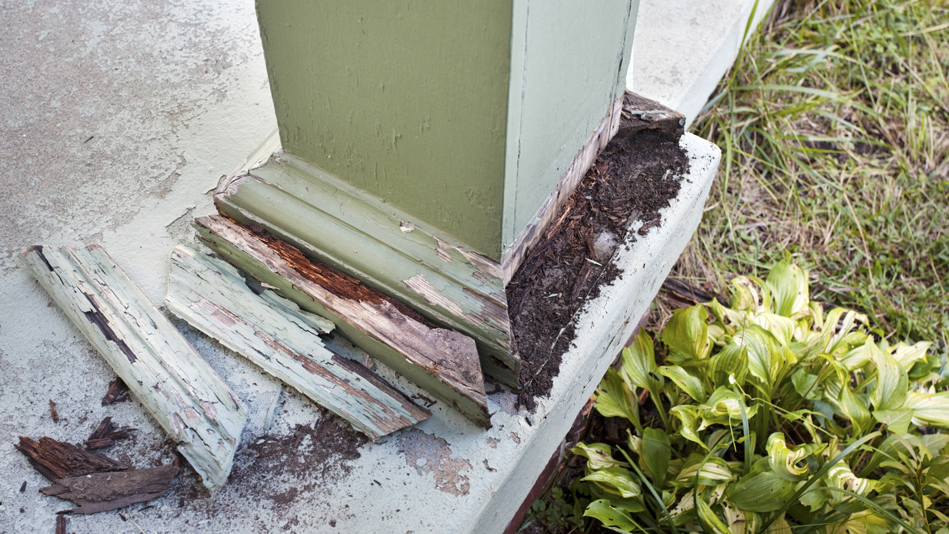Termites are small insects that love to chew, digest, and tunnel through the wood in your home. They can silently wreak big havoc for as long as years before you notice the structural damage, which costs homeowners approximately $5 billion nationwide each year.
So how do you keep these awful critters away? By learning these signs and tips for home termite control, of course!

Signs of termite damage in wood
Though damage to the wood in your home may not be evident for months on end, knowing what to look for can help you address the issue as soon as possible.
- Blistering or buckling wood flooring
- Narrow tunnels in wood or wood furniture
- “Mud tubes” under your porch, around your windows, or wherever wood is exposed
- Walls that look like they’ve experienced water damage
- Termite wings or bodies
- A mildew or moldlike smell
Pro Tip: Some of the signs listed above can be indicators of other concerns in your home (like water damage), so consider all possibilities before determining what steps to take next.
How to prevent termites
Termite season runs from March to November, so practicing the steps below at least once a year can help preserve the integrity of your home for years to come. If you live in a warmer climate, do so 2-3 times a year for a stronger shield against a termite infestation.
Step 1: Keep your plumbing in good shape
With proper and modern upgrades, you can reduce the risk of your plumbing leaking, which can seep into the wood and attract termites.
Step 2: Keep the wood away
Old or infested wood near your home can serve as a bridge for termites to make their way inside. Move any wood piles you won’t use in the next 48 hours to at least 5 feet away from your home, and keep mulch at least 6 inches away from the foundation (finish the closer areas with gravel). Trim your shrubs and trees, and remove any stumps or wood that are dead or infected.

Step 3: Check your home’s foundation, ventilation, and sealing
Inspect your home’s nooks, crannies, and any barriers between the interior and exterior. Keep termites out by making sure all vents are clear and functional and all seals are intact. Use a flashlight to examine your foundation and crawl space for any signs of damage.
Step 4: Check your home’s exterior features, like the roof, air conditioner, and deck
Anything that directly attaches to your home can be an alternate route for these insects to get in. A roof in need of repair can be an entry point for insects, as well as any wear and tear on the tubing or wiring connecting an air conditioner to your home. Examine these to ensure all parts are still intact.
Weak spots on a wooden deck or patio can also make your home more susceptible to a termite takeover. Take these steps to reduce your chances.
- Clear and prevent any stagnant water
- Repair any chipping, and replace any worn planks or trim
- Seal your deck or patio according to package instructions
- Use insecticides around the perimeter
- Monitor the deck, especially the decking joists, for any signs of termites

Step 5: Use a termiticide or a termite bait system
These shouldn’t be your only line of defense against a termite invasion, but these forms of termite protection can be a great supplement to whole-house care. With options for several areas of your home that can block or trap the bugs and choices that only require check-ins a few times a year to once every few years, you can choose the level of safeguarding and maintenance that’s right for your household.
If you do find a termite infestation, we recommend calling in a professional exterminator to make sure every last one is evicted. The cost of termite control may ranges from a few hundred to $5,000, but the last thing you need is for them to come back!
Visit us on Facebook, LinkedIn, Twitter or Instagram to tell us your thoughts!
